

Born, raised, and residing in East London — Ronan McKenzie is the city’s most exciting contemporary artists. From working on high-profile projects with the likes of Acne Studios, Mulberry, and Netflix to launching an independent community hub and fashion label, this latest installment of Hypebeast Visits explores the vast artistic avenues that the multidisciplinary creative occupies and how quiet confidence exudes in her designs.
Being a true multidisciplinary with a proven record in the respective fields is hard to come by — McKenzie is one of those rare cultural powerhouses. Whether it’s styling, directing, design, or curation, her self-titling is born out of not wanting to be restricted to labels or be pressured to thrive in all of her outlets, all of the time. “I have loads of ideas and I don’t necessarily want to shoot down every idea I have,” she says. “Naturally, all creative people have different interests and different mediums to express themselves. It’s finding the confidence and courage to try different things.”
This philosophy leans into her being acutely aware of the freedoms we often take for granted, and cites that it is our duty to explore all of these possibilities whilst we have the privilege to do so. “Our generation is the first to have these creative prospects as options. We have more freedom [than before], and hopefully, we’ll be able to encourage the next generations to do it further,” she exclaims.
“A lot of my work is about connectivity, touch, and love [...] things I like to see more of.”
When it comes to creating, McKenzie’s process is instinctive and rooted in practicality, explaining, “It’s practical because it’s comfortable. The chairs are comfortable. The garments are comfortable. I made a chess board for W Hotel Budapest and it feels comfortable in your hand. Everything has to feel nice.” It’s her ingenuity that allows for honest design as she crafts from necessity whilst seeing herself as the target consumer. Either learning a new skill to solve a problem or immersing herself in a world that she seeks to reference — her work is initiated by a sincere curiosity. “A lot of my work is about connectivity, touch, and love — either romantic, familial, or friends — things that I like to see more of,” she says. “Whenever an artist makes something that they’re passionate about it’s such a touch point because I can step into their world.”
Describing her aesthetic as fluid, the refined shape of the human body is a quintessential source of inspiration and is incorporated into her practice regardless of format. “My designs come from the way that my hand moves naturally,” she says as she recreates the smooth movements of sketching while talking. “I’m inspired by the movement of water and the body is so fluid, there’s not many sharp edges. I’m just drawn to things that flow, there’s a rhythm.”
“Being brown, we have so many different shades on our body. I found it empowering to take back that ownership.”
Translating this design language onto garments, she conceptualized her fashion label SELASI in 2021 — becoming another medium for McKenzie to express herself whilst being at home during lockdown. Creating from the heart, for herself, and what she feels comfortable in — the process begins with perfecting the drape and silhouette as it’s her body that acts as both a muse and mannequin. “I look at my body, and what it can do as it’s in a constant state of change, as inspiration,” she says. “Especially as a woman, our bodies go through such different cycles and I’m able to appreciate the different stages for what it is.”
As well as studying complexion, tones, and the variety of colors that make up skin, this appreciation extends to the palette she opts for in her designs. “Most of the base colors I enjoy using are brown and white, they’re all the colors I can find on my body,” she explains. “Being brown, we have so many different shades on our body. There’s a level of high-key visibility that’s unavoidable, but there’s also the highest form of invisibility. I found it empowering to take back that ownership.”
“I love ruching. It’s flattering and I love the way gathering looks, it’s just like waves. It’s that inexplicable sense of fluidity and freedom,” McKenzie says of the techniques she uses to achieve the rippling effect on her garments. Adorned in SELASI’s Chapter Three, released November 2023, the collection channels the theme of absorbency — an embodiment of her free-flowing design language. “It’s about what we take what we hold and keep and the things that we let wash over us,” she speaks on the range’s inspiration. “A lot of my garments you can make your own. What I love is when people step into my clothes, they step into my world. My language is translatable, and I want you to feel like you understand.”
Constructed almost entirely of leftover fabrics from its second collection, two main materials form the core make-up of the garments: soft cotton toweling and lustrous recycled swim jersey. The collection also takes inspiration from McKenzie’s Bajan heritage and interprets a range of references native to the island. Pieces such as the We Love Barbados jacket features an outline of its map whilst the floor-length Savannah dress is named after the Garrison Savannah horse riding track.
A stand-out piece of her third look is the Mr. Delicious trench coat. Created in partnership with Ricky Wesley Harriott, design director of SRVC, it debuted in her first collection, then again in leather, and this time in toweling. “I’ve edited it a little bit each time, and now I’ve renamed it,” she says. “This chapter is named after all my favorite things in Barbados and there’s a roti truck called Mr. Delicious on Miami Beach.”
She got the coat dyed specifically in a sleek dark brown hue “as it’s one of the darker tones I can find on my body, but it’s also something that makes me the most visible because when I wear this coat so many people stop to ask me about it,” she elaborates on the use of the color in her work. “Brown is everywhere. It’s in the earth. It’s wood. It’s so rich and has so much weight to it. I guess I’m still not over it.”
Styled in the PUMA Mostro, it’s the sneaker’s messaging that resonates most with McKenzie: quietly confident and balancing the concept of “invisibility and visibility.” The re-issue launched over the weekend in a two-pack which the artist styled alongside three SELASI looks, and both the stealthy gray and the bold yellow pairs fit seamlessly into her contemporary, minimalist aesthetic. “They slipped right into my wardrobe so I didn’t even need to think about the styling,” she adds. “They’re quietly confident, they don’t scream in your face, but you will notice them. That’s how I try to design.”
Boasting an ergonomic design that is built to last, the silhouette’s practical, human-centered finish stands out to the creative. “I love the shape. It follows the line of the foot in a way that lots of shoes don’t, and I like that from a design point of view,” she says. Having first dropped in 1999, the Mostro provides a feeling of nostalgia for those who lived through its dominance in the new millennium. “The 2000s was my era of fashion play. I was just vibing and playing with style. It resonates with me because people were free in their expression,” she reflects of her formative years.
Revered for its versatility, the sneaker adapts to the wearer’s unique style something that McKenzie champions through SELASI which she sees as “the most powerful design tool.”
The SELASI vision is not limited to clothes, therefore, McKenzie titles her collections “chapters” to allow space for other ventures to fit within the fold. One of her most ambitious projects, the SELASI Chair, was unveiled during her inaugural fashion runway for Chapter Two in 2022 titled “I Open My Eyes and Taste Desire.” Collaborating with Jobe Burns, the concept is centered around the idea of intimacy and is designed for two people to sit facing each other. “There’s space for you to lay comfortably with your head resting, and hold someone so they can naturally melt into you,” she explains.
Similar to her other works, the human body was a key point of inspiration: exploring the shapes of bones, hips, the back, and spine. Whilst the seat upholstery, crafted from the SELASI knit, taps into touch and tactility “because you can feel the pressure of the indents in your back,” and is also removable to turn the chair into a sculptural art piece whose blank canvas can adapt to any interior.
The show was held at the John Pawson-designed St. John at Hackney church — a “beautiful architecturally designed interior of dark wood and white” — carefully chosen for its stylistic alignment. With a score composed by Melo-Zed, a bespoke fragrance created by her partner Ezra-Lloyd Jackson, and 42 looks modeled by her close circle — it was as much about bringing together family and friends as it was about the garments themselves. Running for just under an hour, the slow-paced show led to the magnum opus of her intimate performance around the SELASI chair. “It was this beautiful opportunity to talk about the nuance of desire. It flowed through the garments, but also the space and the chair was the piece that brought all of these ideas together,” McKenzie says passionately.
McKenzie began her creative journey as a stylist over a decade ago, and it was while assisting on a shoot that she was given her first opportunity in photography. This gesture subconsciously opened her eyes to the positive potential of collaboration which she continues to hold in high regard, explaining, “There’s so much power in a spherical learning environment where you can learn from those above, those at your level, and also from those who are earlier on in the role.”
Throughout her career, collaboration, community, and continuous learning are all important attributes encouraged in the projects she spearheads, and it’s independence that helps her achieve this. “It allows me to have a lot of creative freedom, but it also comes with a lot of pressure to maintain it all,” she says. “I can do it my way. Even with SELASI, I decided I wasn’t doing wholesale because it makes it too expensive for the customer — the customer being my friends and family.”
“It’s inspiring to take power back, one has to be quite brave, and I’m proud of that because I can stand up and say whatever I want. I’m not afraid of burning bridges.”
Boasting a well-decorated resume that includes curating national exhibitions for emerging artists such as working in partnership with Top Boy to honor its final season at Somerset House gallery (aptly chosen given the series’ Summerhouse Estate), publishing culturally powerful photography books as well as a variety of creative direction gigs — McKenzie’s masterful eye for curation is unmatched.
Nonetheless, it’s her community-led hub HOME that is arguably her greatest feat. Launched in 2020, the initiative celebrated the work of BIPOC creatives and is something that she felt responsible for establishing. “If we don’t do it, then who’s doing it? When I started making work, I didn’t feel like anyone was championing me in the way that I felt it should’ve,” she exclaims. “I’ve curated more shows than I’ve ever exhibited. That’s not a bad thing, but it raises the point of who’s standing up for us? Who’s backing us? Because the institutions aren’t. It’s more than just extracting work and sticking it on a white wall.”
Exhibitions such as To Be Held or V&A residencies put emerging artists on illustrious stages that historically weren’t accessible. McKenzie opened those gates. And having a place that’s for artists, run by an artist; for people of color, run by a person of color, is “respectful both ways because I know what it’s like to be an artist, and I want to give the respect that I would like to receive. That’s why it’s important for the person who’s booking or working on a project to understand what it’s like from the other person’s perspective.”
Sadly, after an iconic three-year run, HOME closed its doors in late 2023. This followed a number of grassroots community collectives that have also had to either close or move from their spaces due to operational or financial difficulties, nevertheless, others have launched and are thriving such as the likes of Flock Together, Dijonss, and Athene Club. However, McKenzie continues to advocate for support, safe spaces, and independence. “I’m doing it my way and I love that other people are doing the same thing,” she expresses. “It’s inspiring to take power back, one has to be quite brave, and I’m proud of that because I can stand up and say whatever I want. I’m not afraid of burning bridges where things aren’t right.”
One thing McKenzie stresses, which is a sentiment shared by many creatives, is the importance of recovery in the industry. Not only doesn’t she see enough of it, but it’s not encouraged for people to feel comfortable in taking them. “Rest needs to be celebrated. Our industry begs for constant productivity, but it’s not possible. If we were athletes, we’d need rest days, so as creative people, we should also.”
Traveling has become a big part of how McKenzie spends her time. Despite locality being a core part of her work, experiencing new cultures as well as exhibiting outside of London’s metropolis is something she looks forward to continuing in 2024. “Being here, the assumption is always white. Whilst being in other places, it isn’t necessarily white Britishness,” she explains. “I’m excited now to be exploring and working in different countries — seeing how my voice translates into different contexts and environments.” And it’s venturing out into the unknown where McKenzie hopes to spread her passion, and perspective, of community.
The PUMA Mostro colorways seen on Ronan McKenzie for this Hypebeast Visits are available now at retail partners including LNCC and END. For more information as well as to shop other silhouettes, check out the PUMA website.


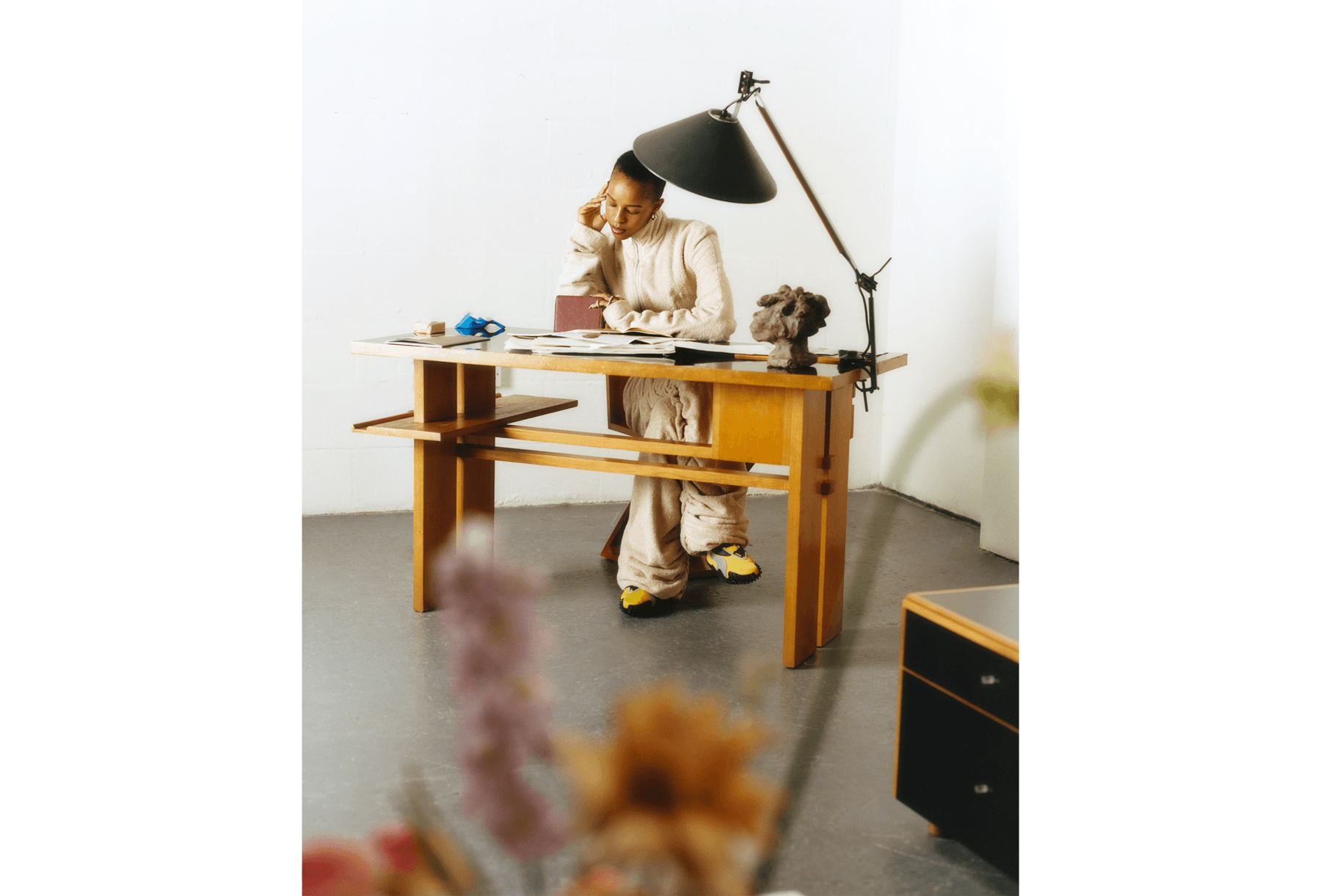
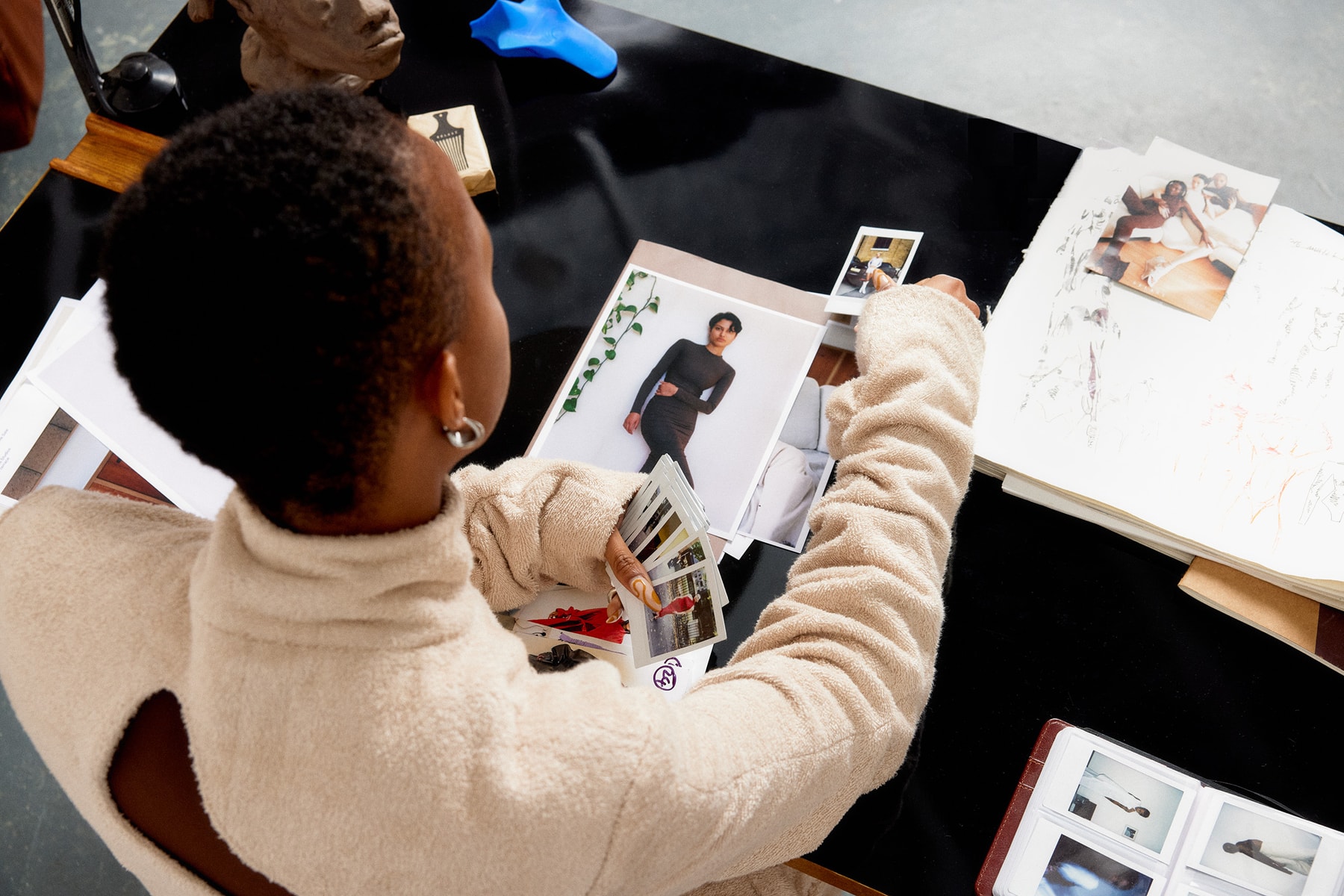

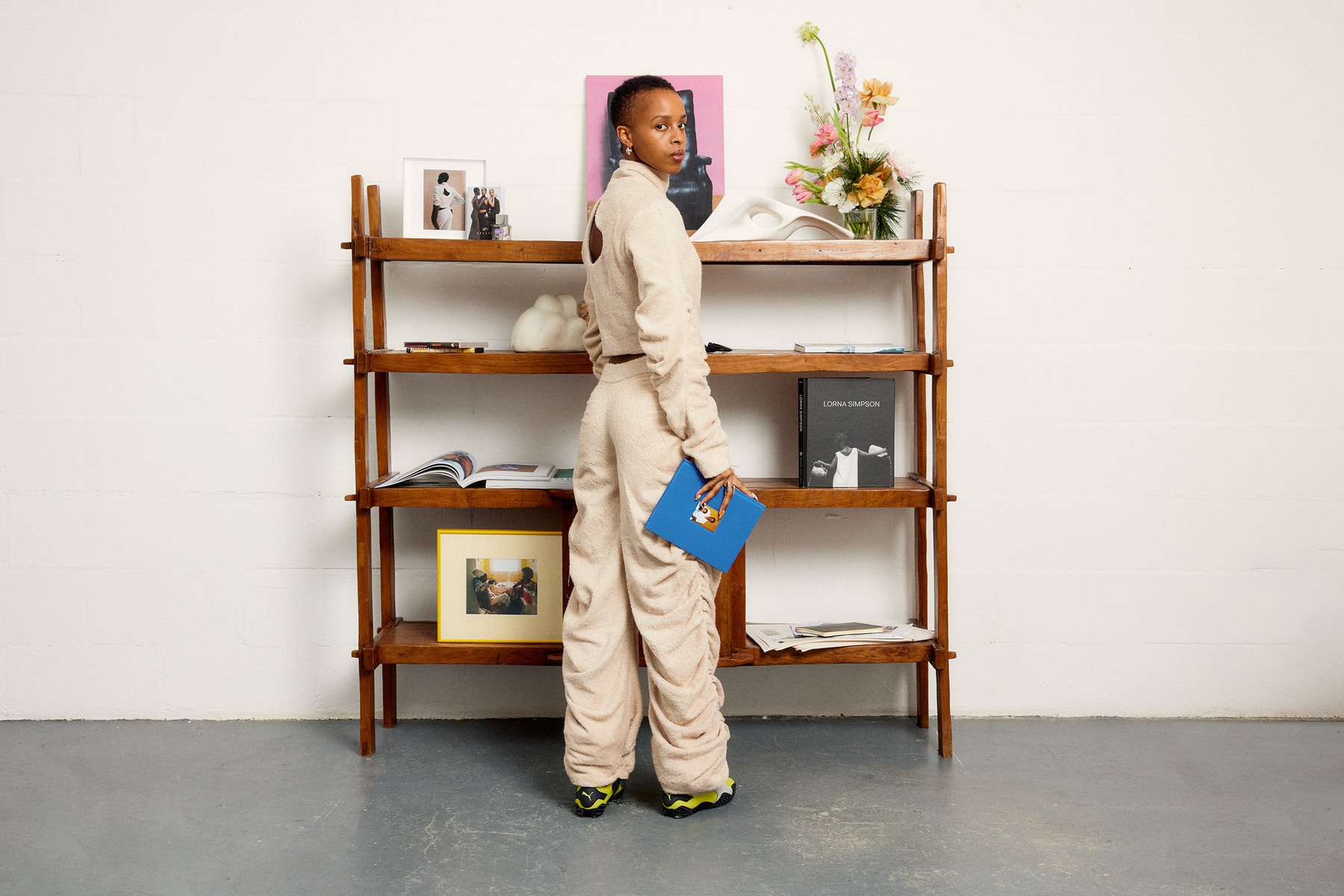




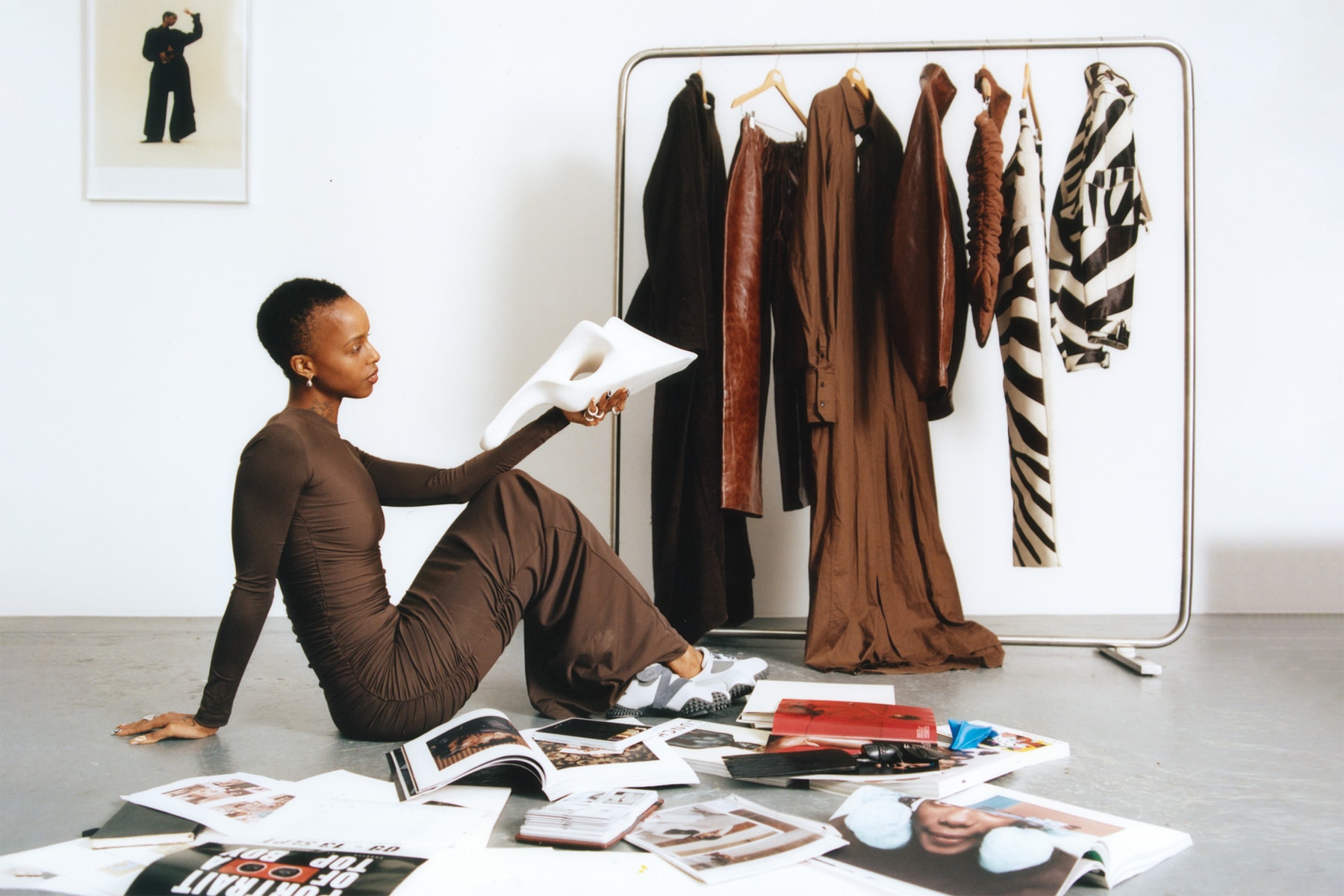

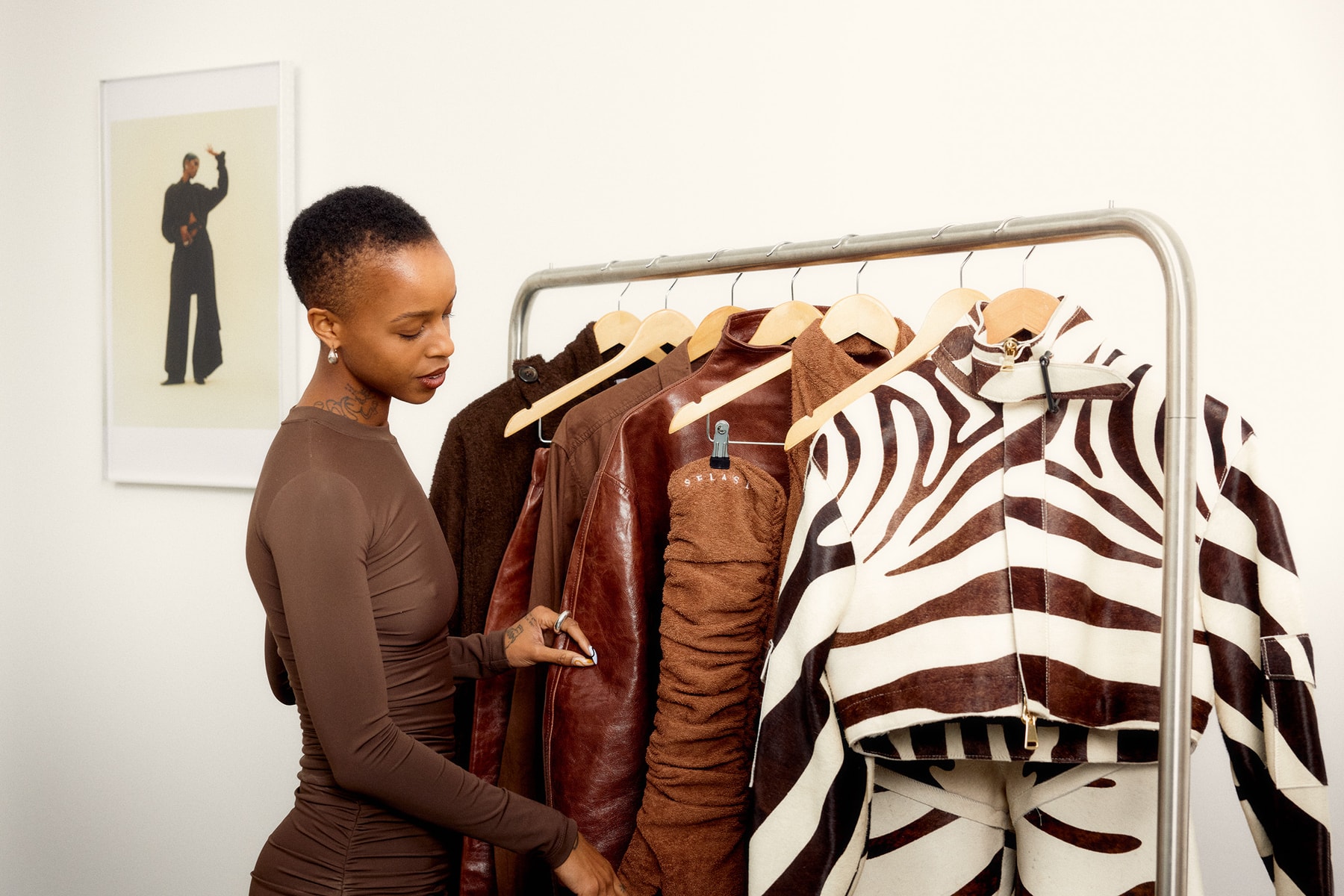

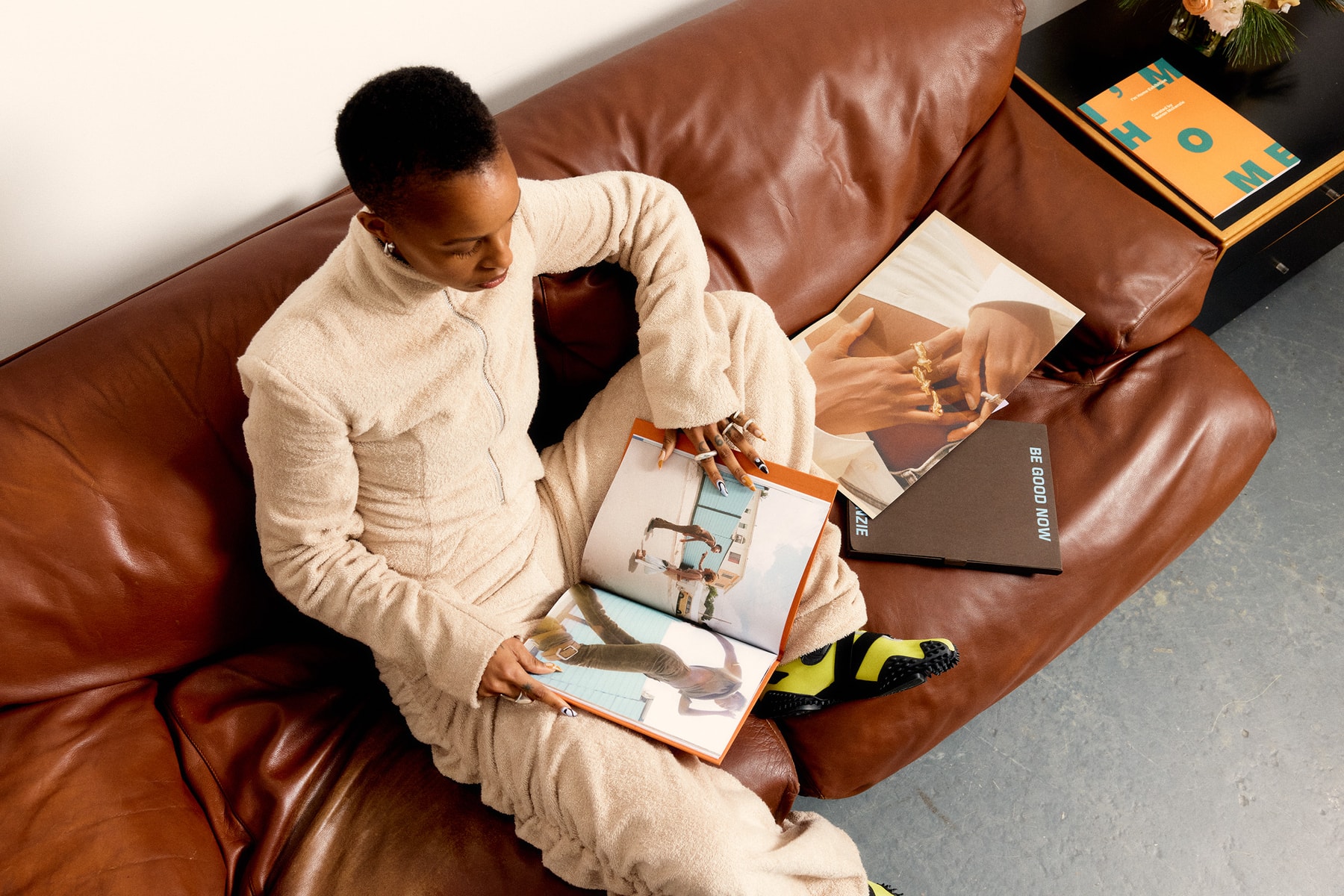
Senior Editor
Ali Mohammed-Ali/ HypebeastPhotographer
Aaron CrossmanCreative
Ali Mohammed-Ali/ HypebeastProducer
Catriona Mccormick/ HypebeastStyle Assistant
Bryiny HatrickSet Designer
Leila LatchinLighting/Tech
Jasmin JacksonMake-Up
MegumiProject Manager
Noah Afors-Graham/ Hypebeast